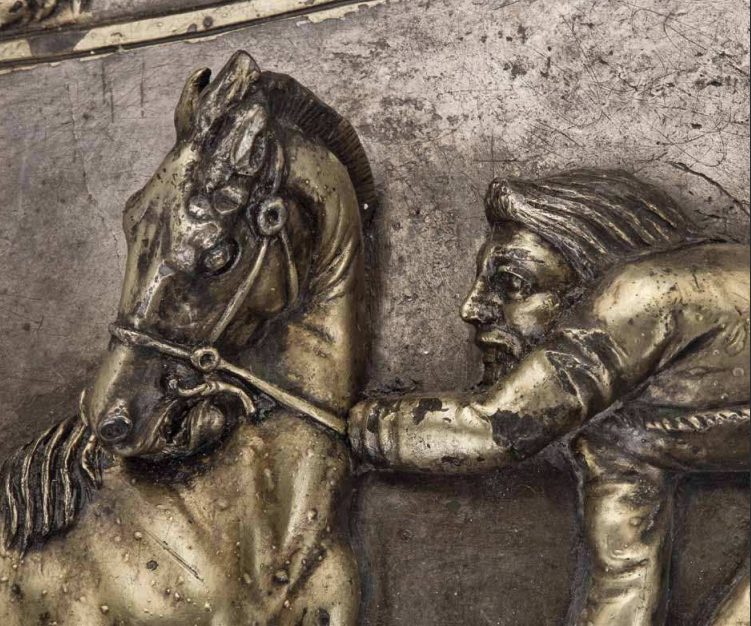Adrian Parvulescu in his scientific article The Indo-European Horse: A linguistic reconstruction writes the following: “Archaeologically reconstructed, the IE [Indo-European] horse was a relatively small animal, used for food or as a sacrificial victim and domesticated around 4000 B.C. in the Sredni Stog culture in southern Ukraine. Initially kept for horseback riding, the horse was used much later, around 2300 B.C., for the traction of light vehicles. Linguistic investigation adds new details to this description. Although the etymology of the IE root for horse *ekuo– is unknown, one can assume that it denoted a ‘work-horse’, not only because most of the words for ‘horse’ derive from terms designating ‘pack- or draft-horses’ (Lat. caballus, NHG Pferd, Lith. arklys), but also because two of its cognates mean ‘ass’ (Arm. es) and ‘mule’ (Gaul. Epona), which could take place only when their common source has the meaning ‘work-horse’ or ‘work-animal’, as in the case of Lat. sagmarius, Gk. hypozygia, etc. IE *ekuo- most probably also denoted a gelding.
To the question of when and where the primitive horse was first domesticated, archaeologists have been able to give us a positive answer: in the Dereivka/Sredni Stog complex on the Middle Dnieper in southern Ukraine around 4000 B.C. (Mallory 1981: 215; Anthony 1986: 295, 303-304; Anthony and Brown 1990). Situated at the southeast end of an area increasingly referred to by archaeologists as the PIE homeland, the Sredni Stog culture flourished around the end of the 5th millennium B.C. and the beginning of the 4th millennium B.C. The domestication of the horse certainly played a major role in the expansion of the Dnieper-Donets cultures. Although archaeologically we witness around 3300 B.C. the most far-reaching event in the yet young PIE civilization, i.e. the appearance of wheeled vehicles (Anthony 1986: 303), the horse has no bearing on it. Too heavy for primitive horse traction, these wagons with heavy block wheels were most probably drawn by oxen in the opinion of archaeologists.
One has to wait until around 2300 B.C. in order to see horses pulling light vehicles with either spoked- or cross-bar wheels (Mallory 1981:215-216). But by that time the dispersal of the PIE unity had already taken place and, along with the new civilization centers, the presumed original unique language of the common homeland split into several branches.”
Quote from David Anthony work mentioned above: “In 1964 Dimitri Telegin discovered the head-and-hoof bones of a seven- to eight-year-old stallion buried together with the remains of two dogs at Dereivka in Ukraine, apparently a cultic deposit of some kind. The Dereivka settlement contained three excavated structures of the Sredni Stog culture and the bones of a great many horses, 63% of the bones found. Ten radiocarbon dates placed the Sredni Stog settlement about 4200-3700 BCE, after the Dnieper-Donets II and Early Khvalynsk era.”
“Cradle of Civilizations” book has more little-known facts about the amazing events that took place in the area of present-day Ukraine. “Royal Scythia, Greece, Kyiv Rus’ has the description of the Chertomlyk Vase.
